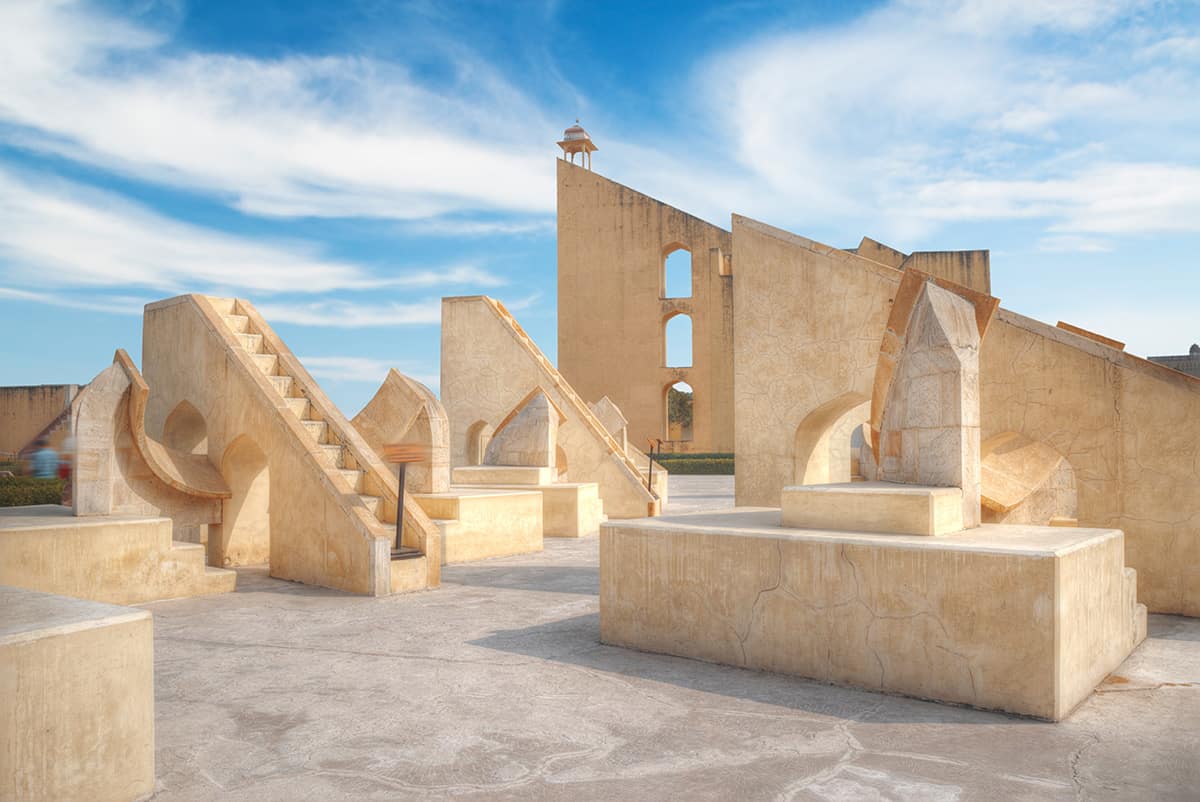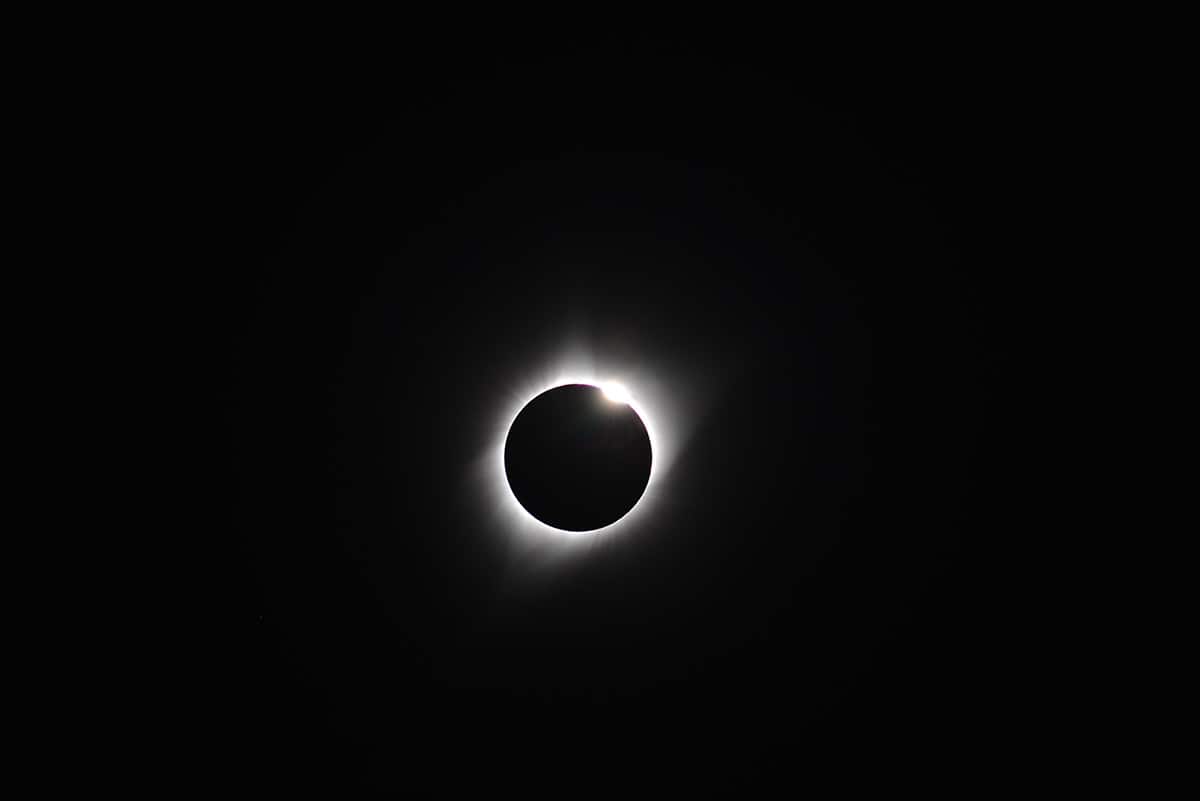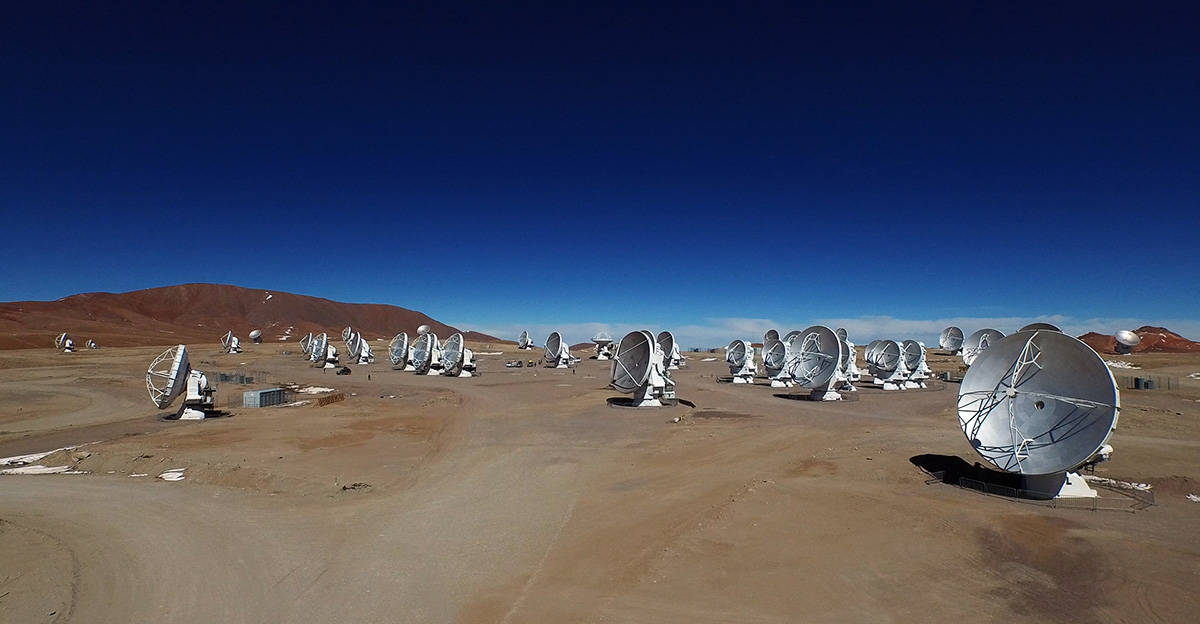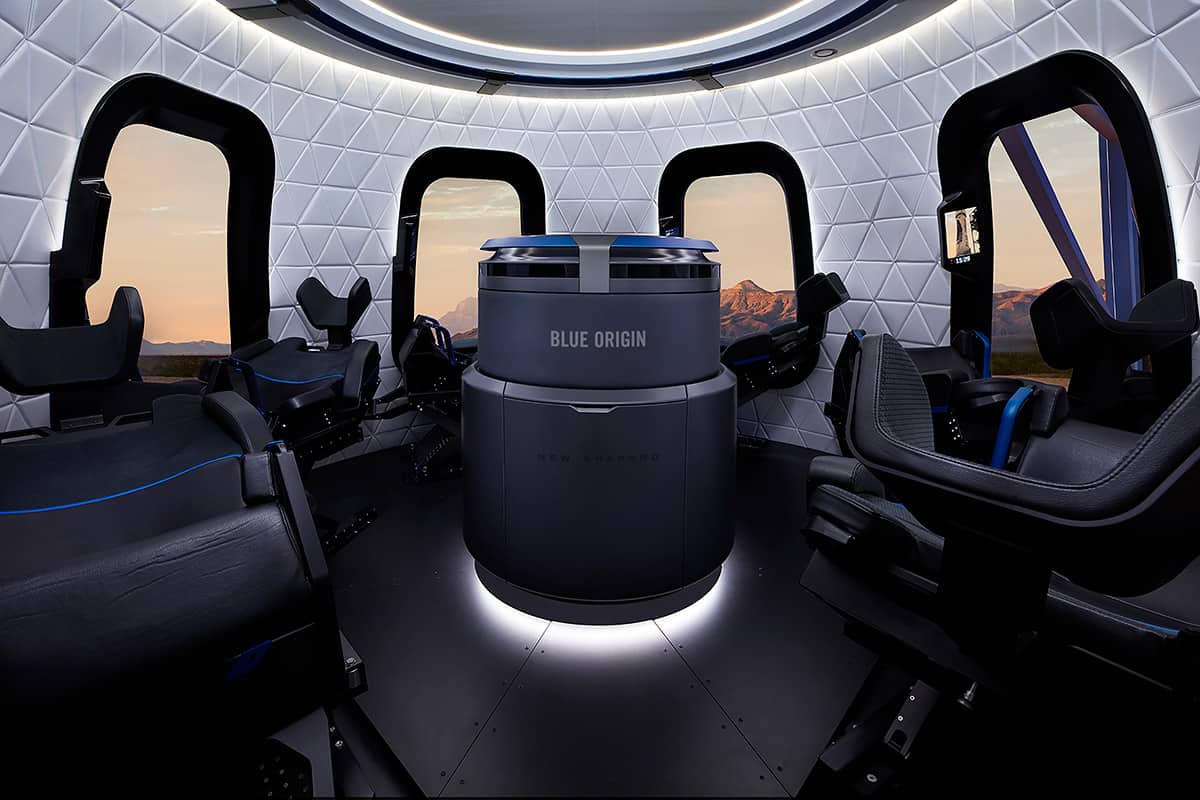After a difficult year spent largely indoors, we’re all in need of a getaway. Juanita Bawagan explores some dream destinations – from scientific wonders in our backyard to flights into outer space
Throughout the seasons of her life, Marie Curie famously enjoyed going on leisurely hikes in the mountains or on strolls by the seaside during regular family vacations. No stranger to a summer sojourn himself, Albert Einstein once joined the Curies in the Swiss Alps. On another occasion, he set off on a placid Panamanian cruise “for maximum calm and reflection on ideas from a different perspective”.
We often think of scientists as hopeless workaholics, confined to their labs or libraries, just waiting for their next “Eureka!” moment to strike. But while genius may never rest, many of our greatest scientific minds did – and they often found their best ideas while enjoying a little R&R. Werner Heisenberg revolutionized quantum mechanics not in a university, but on a North Sea retreat. Wave theory was the result of one particularly productive Christmas holiday for Erwin Schrödinger. And although he was no longer an active researcher at the time, when word came out that Peter Higgs had won the Nobel Prize for Physics, he too was on vacation.

There’s a lesson here for all the budding Bohrs out there: whether you use a holiday to pen the next ground-breaking paper in quantum mechanics or simply unwind, there is much to be gained from taking some time to recharge. Scientists can find inspiration anywhere and similarly science can also be found everywhere. A physics-themed vacation may conjure up images of beautiful libraries and awe-inspiring science museums, but it can also take you to some of the most extreme parts of the world. No matter what kind of traveller you are, there are all sorts of physics-infused destinations tying together science, history, culture and the world’s natural wonder.
Eclipse hunting
For some trips, it’s about being at the right place at the right time. That’s certainly true of solar eclipses, a handful of which take place every year, with a total eclipse occurring about once every 18 months. The beauty of “eclipse hunting” is that you know exactly when and where they will happen, meaning you can plan your trip well in advance. But as a traveller, you also need to be prepared to readjust to unpredictable weather and large crowds.
For Tami Freeman, an online editor with Physics World, the urge to observe eclipses goes back to 1999. It was the last time a total eclipse passed through the UK, although to avoid the crowds Freeman headed to north-east France, which also lay along the line of totality – where the eclipse is most visible. In August 2017 Freeman had her next shot with the so-called “Great American eclipse”. The US is prime eclipse-hunting territory because the path of totality covers a wide area on land.
But despite planning her trip nearly a year ahead, she found almost all of the locations in Wyoming were full up, so booked a hotel in Scottsbluff, Nebraska instead. “It cost us an absolute fortune,” she says. As it turned out, on the actual eclipse day, the family woke to find it was foggy, “so we drove west until we found a patch of clear sky, and ended up in Wyoming anyway!”

After waiting for a few hours, the solar eclipse began and they watched the Sun slowly disappear into a sliver of a “diamond ring” of light (see photo, above). “It’s like nothing you’ve ever seen. We were in the middle of nowhere, we had a 360-degree horizon and it was like a sunset all the way round, it was very strange,” says Freeman. “You could start to see the stars appearing in the middle of the day and it was all very quiet.”
The next total solar eclipse to cross the UK won’t be until 2090 – when most of you current readers will be long gone – but on 8 April 2024, North America will once more be graced by an eclipse with a path that will cut across a vast swathe of the country. For those planning a trip, Freeman recommends booking travel and accommodation as far in advance as possible, and being flexible.
If you’re not yet ready to commit to that journey, there are also regular partial eclipses to be enjoyed closer to home. Part of the benefit of eclipse hunting – or stargazing more broadly – is that besides travel costs, all you need is to have is the right conditions and some gear to capture the moment. Depending on what type of equipment you buy and where you want to watch from – your backyard, a local dark sky reserve or aboard a stargazing yacht at sea – it’s a trip that can suit all budgets.
Science, culture and nature
To tap into the growing demand for science-themed holidays, in 2019 New Scientist magazine launched a series of “Discovery Tours” – holidays with set itineraries to explore the astronomical, cultural and historical side of destinations with a scientific twist – after several successful one-off trips. The tours are usually led by science journalists or famous scientists like Richard Dawkins. Unfortunately, thanks to the global pandemic, only one of the tours took place before most of the world went into lockdown. Now, as things begin to open up, director Kevin Currie is hopeful for the delayed trips to take off.
According to Currie, the audience for the trips ranges from academics, students and active researchers, to those who are just interested in science and looking for an intimate and unique experience. “One of the big changes that the whole travel industry is seeing is that it’s not so much about volume of travel. Now, it’s more about travelling with purpose, going and doing something immersive or experiential, rather than just lying on a beach,” he says.

Whether you go on a themed tour or tag a stop onto your vacation, there are always ways to work in some science to a holiday. Physics sites are tied with many of the natural wonders of the world, from taking in the Aurora Borealis and volcanoes in Iceland, to visiting the birthplaces of discoveries.
Indeed, much of the great science of the world is inseparable from the history of specific locations – there’s Marie Curie’s Paris; the Museo Galileo in Florence; the Jantar Mantar complexes of 18th-century astronomical instruments in four cities in northern India; and even the Chernobyl exclusion zone in Ukraine (see box below for more). Closer to home for readers in the UK, you could take a day trip to Jodrell Bank Observatory in Cheshire; Woolsthorpe Manor – Isaac Newton’s home – in Lincolnshire; or Bletchley Park, the once top-secret location of Allied codebreakers during the Second World War, in Buckinghamshire, to name a few.
Seven dream destinations where physics and culture collide

Prague, Czech Republic Walk across the cobblestones of Old Town Square to marvel at the medieval Prague Astronomical Clock. Next, make your way to the gothic Church of Our Lady before Týn, where you can find the tomb of Danish astronomer Tycho Brahe. Prague was also the home of Brahe’s assistant and revolutionary astronomer Johannes Kepler – you can learn more about the pair at the National Technical Museum’s astronomical section.
Bern, Switzerland A trip to the Swiss alps may lead you through its capital Bern, and you would be remiss to not visit “Einstein Haus” – home of legendary theoretical physicist Albert Einstein from 1903 to 1905, when he worked on his special theory of relativity. The city also boasts an Einstein Trail where you can follow in the great thinker’s footsteps, as well as the world’s largest Einstein museum.
Siracusa, Italy This idyllic Sicilian town was home to Greek mathematician, physicist, engineer, inventor and astronomer Archimedes. Follow in his sodden footsteps (though you may wish to be more modestly dressed) and have your own “Eureka!” moment at the Museum of Leonardo Da Vinci and Archimedes.
Belgrade, Serbia This city hosts the Nikola Tesla Museum, an expansive account of the life and work of the famous electrical engineer and inventor, and is also his last resting place. Opened in 1955, it was the first technical museum in former Yugoslavia, and is home to Tesla’s extensive archive, including 160,000 original documents, more than 1200 historical technical exhibits, and some 1500 photographs and photo plates of his original apparatus.
Grootfontein, Namibia Unearthed on a farm in central Namibia, some miles outside the city of Grootfontein, lies the largest intact meteorite on the planet. The 66 tonne Hoba meteorite has never been moved, only fully excavated, after it was discovered by landowner Jacobus Hermanus Brits in 1920, while ploughing his field. Thought to have crashed into the Earth some 80,000 years ago, the behemoth is particularly interesting as its impact left no preserved crater.
Lonar Lake, India A day’s drive from the busting metropolis of Mumbai lies the tiny township of Lonar, home to Lonar Lake – a meteorite crater created in the Pleistocene epoch, some 35—50,000 years ago. Lonar is one of four identified hyper-velocity impact craters in basaltic rock found anywhere on Earth, with the other three located in Brazil – but Lonar is the world’s only salt-water lake in basaltic rock. The remote location also makes it an excellent dark-sky stargazing spot.
Kobe, Japan Stretching across the Akashi Strait and linking the mainland city of Kobe to Iwaya on Awaji Island is the Akashi Kaikyo Bridge – the world’s longest suspension bridge. Completed in 1988, the bridge is 3911 m long, with two main supporting towers that stand 297 m above the water, making it also one of the tallest bridges in the world. Thanks to the seismic instability of the area, the bridge makes use of a complex system of counterweights, pendulums and girders to withstand severe storms and earthquakes.
Extreme physics
For thrill-seeking travellers, some of the most exciting labs and experiments are nestled in the most far-flung parts of the world. When author and physicist Anil Ananthaswamy was writing his 2010 book The Edge of Physics: Dispatches from the Frontiers of Cosmology, he was in search of the most extreme places where physics is carried out. His journey drew him to some impossibly exotic locations – from Antarctica, where he travelled to watch the launch of an antimatter experiment into the atmosphere; to the Atacama desert in Chile, home to the Atacama Large Millimeter Array radio telescope.
While some of the locations he visited were harder to reach, Ananthaswamy says that Lake Baikal in Russia was perhaps the most memorable. Considered to be one of the deepest lakes in the world, Baikal made for the perfect spot to build the Deep Underwater Neutrino Telescope. “I went there in the peak of winter, and going to Siberia in winter is nuts,” recalls Ananthaswamy. “[However], it’s the only time to go if you want to see the physicists working on their experiment.” Ananthaswamy is currently based in California, but would like to return to South Africa to visit the Square Kilometre Array network of telescopes, which was still in the planning stages when he visited in 2007.

While the sites in his book are remarkable and far flung, that is exactly why more people shouldn’t visit them, he says. “The reason why these experiments, these telescopes, are in these remote places, is precisely because they have to be away from humanity. All of the noise that we bring as people – whether it’s mobile phones or light pollution or just noise of all sorts. These experiments are where they are because they are silent.”
For tourists, the best option is to visit scientific sites that are geared for visitors such as historical observatories that are no longer in active use. One example is Mount Wilson Observatory in Pasadena, California, which is the focus of the historical chapter in The Edge of Physics. Other major facilities open to the public include the CERN particle-physics lab in Geneva, which sees some 120,000 visitors in a typical year. Underground tours of the Large Hadron Collider are only possible during the long shutdowns that happen every 4-6 years, during which the lab usually organizes open days for the public. But anyone can sign up for a guided tour to see other parts of this massive experimental site, including areas of the detectors, the computing centre and CERN’s permanent exhibitions.
The final frontier
While there are plenty of exciting and magical holiday spots here on Earth, some intrepid travellers want something even more exotic – a trip beyond the bounds of our planet. The idea of travelling to space for pleasure has been around since before the first rocket launches, but it has been slowly shifting from the realm of sci-fi and into reality.
It’s now two decades since the American entrepreneur Dennis Tito became the first space tourist to fund his own trip when he paid $20m for a seat on a Russian Soyuz spacecraft to visit the International Space Station in 2001. Since then, commercial space travel has advanced, yet it is still limited to millionaires who can afford the pricey tickets on their own.
Recently, the commercial space sector has seen investment from more private companies including Blue Origin and Virgin Galactic. Wendy Whitman Cobb, a political scientist at the School of Advanced Air and Space Studies in Montgomery, Alabama, says she hopes this signals the start of a new era in space tourism. While the tickets would be cheaper, they would also be buying suborbital flights, meaning the rockets won’t get up high enough or go fast enough to get into orbit. Passengers will experience a few minutes of weightlessness before coming back down to Earth.

“I think this is an interesting entry point into that space tourist idea. It is a first step to making space accessible to the ordinary everyday person,” says Whitman Cobb. The next step, she says, is to earn the public’s trust by showing that space travel can be safe and reliable. Together with the development of reusable rockets and parts, and increased numbers of trips, these advances could help bring costs down and establish a viable space tourism industry.
While a trip to space is not yet in the cards for most of us hopefuls, Whitman Cobb does believe it is coming closer into reach. In the meantime, she likes to turn to the wonders of space that you can experience on Earth. Growing up in Florida, Whitman Cobb would regularly visit the Kennedy Space Center and watch rocket launches. “I think any place you can go to see the enormity and the complexity of these machines is just my day at Disney.” Most recently, she had a chance to see a SpaceX launch from a nearby beach. Whitman Cobb recalls the awestruck crowds as the rocket took off and then heard the engine’s delayed roar. She says instances like this are key to understanding the science. “It’s very hard sometimes for people to appreciate space and what we do up there because you can’t see it, you can’t wrap your arms around it. [US Space Force general] John Raymond once said ‘You can’t reach out and hug a satellite’, and it’s very true.”
Dream vacations on Earth and in space
- Exodus Travels, Solar Eclipse Holidays (17 days from £13,800): Can’t wait for the next total solar eclipse near you? Head to Antarctica later this year for a combined vacation and solar eclipse tour, as well as visits to South Georgia and the Falkland Islands.
- Northumberland Dark Sky Park (free, approx. £74 per night for accommodation): This UK county is home to many Dark Sky Discovery Sites where you can stargaze independently. There is a variety of accommodation, including glamping pods around the park.
- Space Adventures: As the top broker for space tourism, Space Adventures is the only company to have organized tourist flights. Costs are not disclosed but there are a range of options from the first tourist space walk and circumlunar missions, to low Earth orbit trips with SpaceX.
- Blue Origin: A suborbital trip with Jeff Bezos was recently auctioned off for $28m. This is the first seat sold aboard Blue Origin’s commercial spacecraft New Shepard, but future trips will reportedly be in the range of $200,000–300,000.
- Space for Humanity: While space tourism has been largely confined to millionaires, this charity aims to make it accessible to leaders from different walks of life. It is planning the first sponsored citizen astronaut mission and is open for applications.




